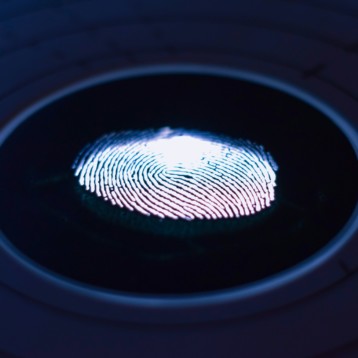|
“Magic Mirror” is equipped with an RFID reader, used to identify the specific pieces of clothing that are placed or worn in front of it. Once these are matched against the store’s digital catalogue, the mirror automatically displays the relevant information regarding these items, which includes details such as brand messaging, garment description, pricing and size, color and availability. Moreover, it provides visual mix-and-match guides, which help the buyer to easily find additional recommended clothing items and accessories that correspond with his/her choice. The mirror surface, while being almost indistinguishable from that of a traditional mirror, is in fact a touch-screen, through which customers can interact with the device, switching between various types of offered information. Such mirrors, which have already been installed in the fitting rooms of several stores worldwide, also allow the customers to call for assistance by simply touching the mirror glass, sparing them the fuss of changing clothes and going out of the dressing room to find a salesperson.
The underlying technology of this product is “Reversys” – developed by the French company “Sensitive Object”. It is based on the recognition of acoustic waves propagated in an object when it is touched. The “wave-patterns” produced when the user taps the object are used as acoustic signatures, which are unique to the location of the impact – acoustic sensors linked to a computer are used to capture the audio vibrations within an object and generate these signatures. According to the company, this technology can be applied to different materials, such as wood, metal, glass, plastic etc., allowing almost any item to be transformed into a touch-sensitive object and become “a tactile screen or a button panel capable of relaying user input for information and control.”
|
By making the fitting experience more exciting, Paxar hopes to engage the customers in a way that will influence their purchasing decisions on the “emotional level”, a well-known tactic to enhance sales. “With the RFID magicmirror, retailers now have a unique opportunity to connect personally with their customers who have become more perceptive about the products and services they buy,” said Chris Robins, vice president of trade marketing and member of the global RFID team at Paxar. “Consumers are becoming increasingly savvy – they’re accustomed to using technology in their daily lives, especially when shopping for items. To communicate with them in their digital language and engage them, the industry must find relevant, innovative technology that helps tell a brand story better. The magicmirror solution does that and is poised to become a huge driver of item-level RFID adoption as consumers are encouraged to interact with the positive features and experience the significant benefits RFID brings” – he added.
In addition to working with “TheBigSpace”, which provides Paxar with rich media and content-related features, the company has also teamed up with Motorola for a supply of RFID readers and Infosys – a developer of Visual Merchandising applications. “Teaming up with industry-leading experience design partner thebigspace, and technology partners, Motorola and Infosys, has enabled Paxar to develop a turnkey consumer-facing RFID solution for the apparel and retail markets,” said Robins. “The integration of Paxar’s custom-designed RFID labels and tags with thebigspace’s rich media and content, Motorola’s RFID readers and handheld devices, and Infosys’ Smart Visual Merchandising applications for store operations and eCommerce, allows magicmirror to fully deliver the power of RFID technology and create a unique and innovative customer experience.”
TFOT has previously covered a number of innovative RFID-based products, including the “Object” gadget, which offers a unique photographic experience by enabling users to relate digital data with physical objects, creating meaningful links between them.
More information on the “Magic Mirror” can be found here.












